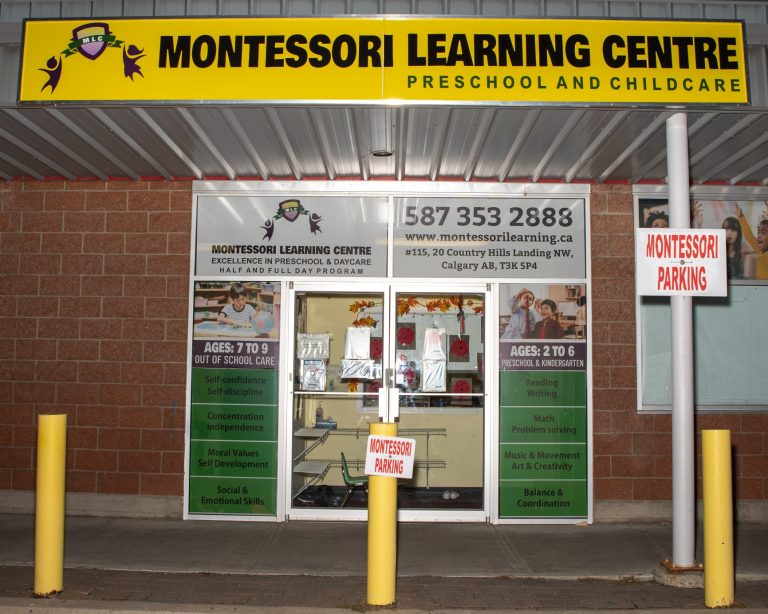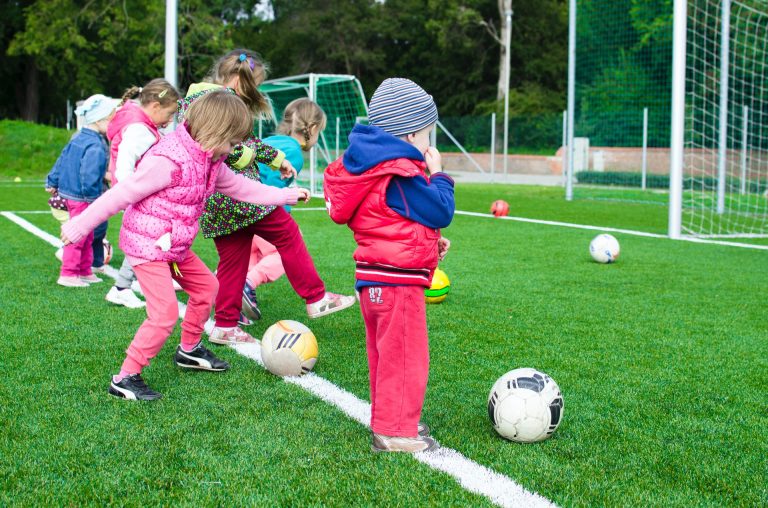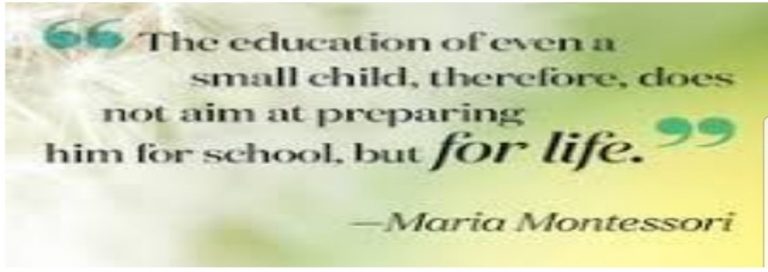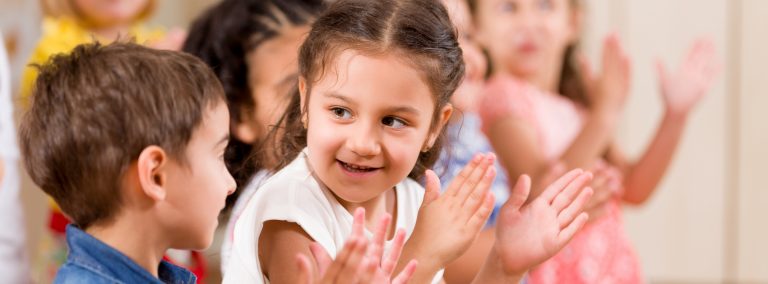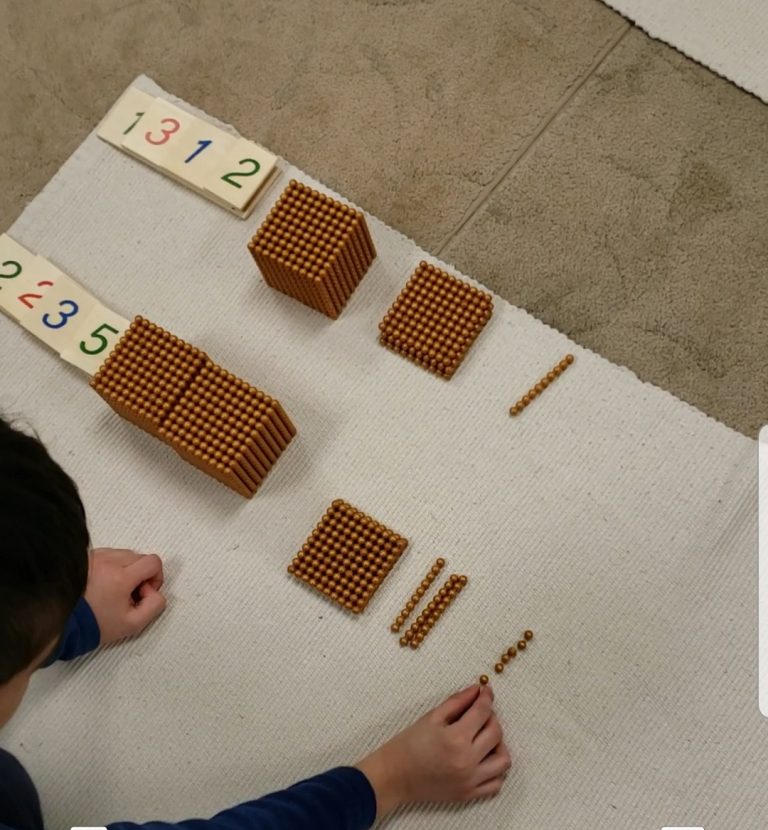What’s Real? A Montessori Approach to Fantasy and Reality for Preschoolers
“Is the Easter bunny real?”
“Does Santa Claus visit our house?”
“Did dinosaurs really exist?”
Young children are curious and ask many questions. As they try to understand the world around them, it’s common for preschoolers to wonder what’s real and what’s pretend. Categorizing what’s real and fake helps young children make sense of the world.
At the same time, themes of fantasy, fairy tales, and pretend also overwhelm children’s literature, media, and society in general. While some children might question Santa Claus’ existence at the age of 3, others believe in the jolly gift-giver well into elementary school. Studies show that as many as 85% of 5-year-olds believe in Santa.
However, is this the right approach? What arguments are there in favor of and against encouraging children to believe in a fantastical being? Is it ok for children to engage so seriously with fantasy?
According to Montessori, parents and teachers should focus on teaching young children about the real world. Let’s take a look at why Montessori believed preschoolers needed a strong foundation in reality before delving into fantasy.
Imagination vs. Credulity
In her book, The Advanced Montessori Method, Montessori explores the topic of imagination in detail. She explains that many adults claim they are developing children’s imaginations by encouraging them to believe in the Easter Bunny, Santa Claus, and other fantastical beings.
Yet, she believes that instead of promoting imagination, adults are creating credulity. Because children haven’t yet developed the experience and knowledge to evaluate what’s real and what’s not, they believe what they’re told. Adults are the holders of knowledge. Many young children believe everything adults say because that is appropriate for their stage of development. Over time, children learn to think critically and evaluate information.
Instead, Montessori believed that adults are the ones who do the imagining in this scenario. We are the ones who make up a story about Santa Claus living at the North Pole. Adults create stories, movies, and traditions using their imaginations. Then, we pass on these imagined ideas to children.
Montessori explained that older children and adults often pride themselves in no longer believing in imaginary characters. In her own words, she said, “…we are proud to have outlived these epochs.” Going on, she explained that when children eventually stop believing in fairy tales, adults are proud of them. In other words, Montessori didn’t think it was worthwhile to have children believe in Santa, fairy tales, and other fantastical ideas.
Are there benefits of children being credulous? A third of children and half of adults experienced negative emotions after discovering Santa doesn’t exist. Adults may argue that it’s fun and magical to believe. But, is it fun for us adults or is it truly for the benefit of the child? Believing in Santa is a fun tradition, but many Montessori teachers and parents choose to abstain. There are plenty of other fun traditions surrounding holidays that don’t require deception.
What Is Fantasy? What Is Imagination?
Fantasy, pretend, and imagination all pull from the same idea. This idea is thinking about something that doesn’t exist in reality. Yet, fantasy goes further than imagination. From fairy tales to talking animals, unicorns, and dragons, people have long used creativity to invent fantastical events and creatures. Other examples of fantasy include magic, superpowers, and more.
Yet, imagination can be closer to reality than fantasy. As Montessori noticed, a child might pretend a stick is a horse, create a “bus” out of chairs, or play doctor. Although less extreme, children can create a reality that doesn’t exist in which they are mothers, fathers, teachers, or doctors.
Imagination Grows from an Understanding of Reality
Montessori believed that rather than heading straight into fantasy, children should spend time using their imagination based on reality. As she wrote, “The true basis of imagination is reality…”
What did she mean by this? Montessori believed that by learning more about reality, children can imagine even more. While Montessori encouraged imagination, she also recognized that very young children may struggle to understand the abstract. So, she encouraged young children to learn more about reality in the concrete world before introducing fantasy.
When children have built a strong understanding of the world around them, they can tell the difference between fantasy and reality. That helps eliminate confusion about what is real and what isn’t. Plus, when children understand reality as preschoolers, it can help them enjoy fantasy later.
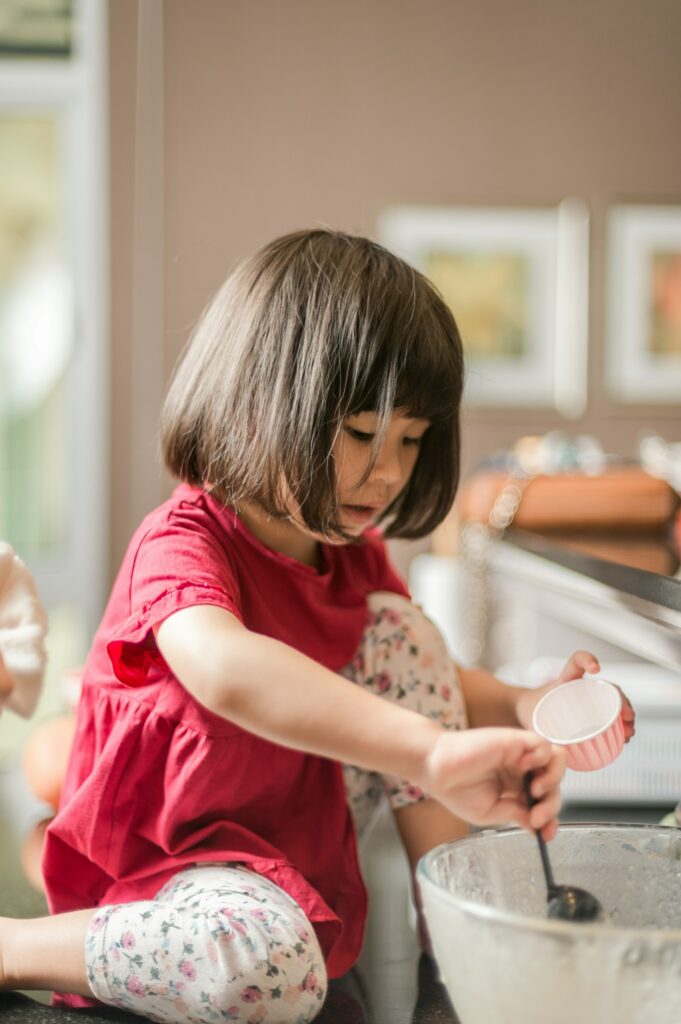
Cultivating a Strong Sense of Reality
How can we help preschoolers develop a strong sense of reality?
There are many ways. From choosing books with real photos to offering real items over toys, here are a few ways you can help your preschooler build their understanding of reality:
Providing Real Materials vs. Pretend Toys
In the Montessori classroom, children can work with real materials. There are no toys such as stuffed animals, play dishes, or dollhouses in the Montessori classroom. Instead, children can work with real materials.
Montessori chose to use real materials in part because she noticed that when given the chance to choose, children prefer real materials. Children can use real glass, shoe polish, soap, food, locks and keys, and more, in the Montessori classroom. When working with real materials, children also learn that if you don’t handle glass carefully, it breaks. Plus, children gain a sense of independence from knowing how to perform practical skills such as cleaning up a spill or making a snack. Children learn a lot about the world and how it works when they can use real materials.
Learning Through the Senses
Montessori wrote, “Imagination can have only a sensory basis.” She also believed in the importance of learning through the senses. That’s why her classrooms include materials that help children practice their sense of touch, hearing, smell, vision, and taste.
Learning through the senses gives children more information about the real world. They learn that metal feels cold to the touch, and wood feels warm. They also learn about texture, rhythm, smell, and more. This basis in reality then helps children use their imaginations. For example, if they’re reading a story that mentions “vanilla,” children who have smelled vanilla can imagine it in their heads. Similarly, when creating their own stories, children can include sensory details based on real-life experiences. The process of writing a story involves lots of imagination but is based on real experiences.
Encouraging Pretend Play, Based in Reality
Even if you choose not to go overboard on fantasy with your preschooler, you can still encourage pretend play. Pretend play can bring many benefits such as learning social skills, building a larger vocabulary, and developing emotional intelligence.
Basing pretend play in reality is easy and kids do it naturally all the time. Whether they pretend to be a part of a family, create a restaurant, or imagine they are doctors, children can enjoy play based on reality.
Parents and teachers can encourage play based on reality by providing the materials and resources necessary for play. Children don’t always need a lot of support or fancy set-ups. For example, children can turn a cardboard box into a car. Or, they can use real dishes and food to set up a pretend restaurant. They might even use combs and brushes to style each other’s hair. Sometimes, adults can help by suggesting a pretend scenario or by providing additional support. However, in most cases, children don’t need much help, playing is natural for them!
How and When to Introduce Fantasy
When is it the right time to introduce fantasy to your child? According to Montessori, there are four planes of development. The second plane, from age 6 to 12, is when Montessori recommended that children start exploring fairy tales and other literature based on fantasy. By this time, children have a good grasp of reality and can tell the difference between fact and fiction.
That said, if you’re a parent, it’s up to you! Superheroes and fairy tales can be a lot of fun. However, if you’d like to take a Montessori approach, you might limit your child’s exposure and focus more on realistic fiction and pretend play based on reality. In addition, you can be sure to help your child navigate what’s real and what’s pretend. Some parts of fantasy can be very scary for young children! Can you imagine believing monsters and witches were real? This can be terrifying for young children, as they might believe everything they see is real. Or, it might be incredibly disappointing to learn that magic isn’t real. Guiding children to understand fantasy and reality can help them navigate these concerns and questions.
Help Your Child Grow with Montessori
Would you like your child to enjoy the benefits of Montessori? At Montessori Learning Centre, preschoolers get the chance to work with real materials and enjoy pretend play based on reality. Get in touch to learn more about our programs.



